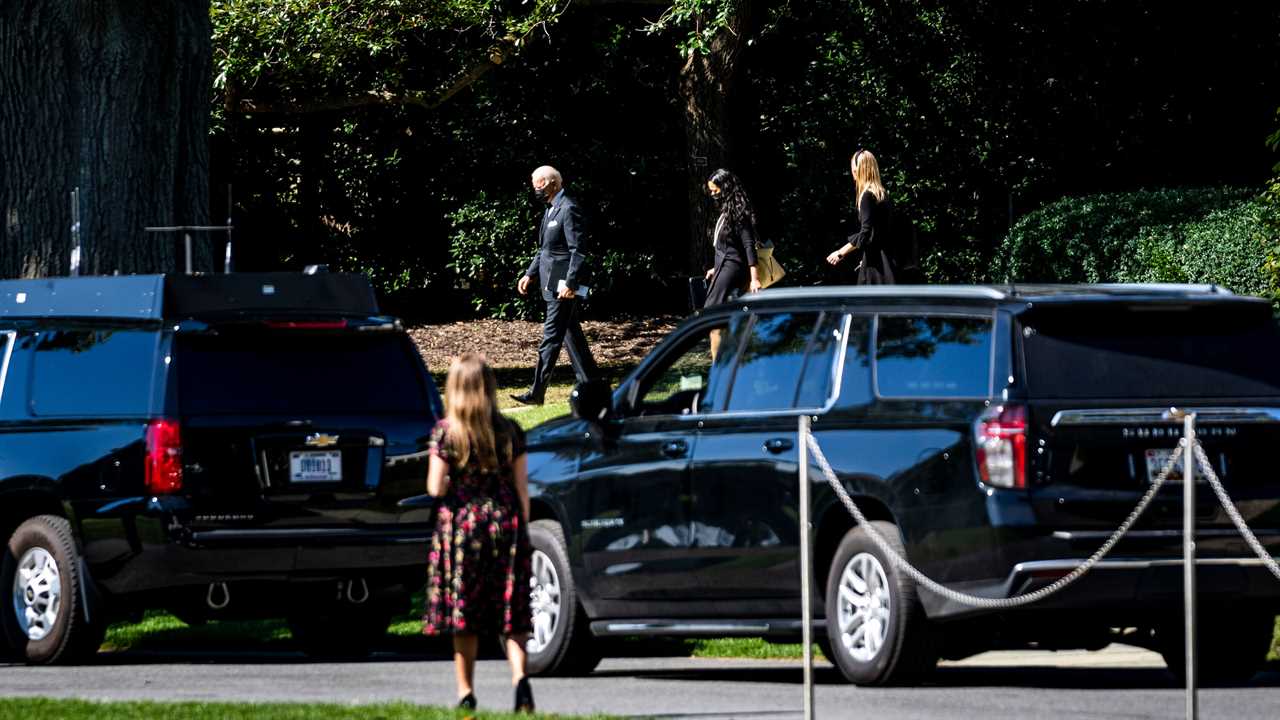
WASHINGTON — President Biden and his aides mounted an all-out effort on Wednesday to salvage Mr. Biden’s economic agenda in Congress, attempting to forge even the beginnings of a compromise between moderates and progressives on a pair of bills that would spend trillions to rebuild infrastructure, expand access to education, fight climate change and more.Mr. Biden canceled a scheduled trip to Chicago, where he was planning to promote Covid-19 vaccinations, in order to continue talking with lawmakers during a critical week of deadlines in the House. One crucial holdout vote in the Senate, Kyrsten Sinema, a centrist from Arizona, was set to visit the White House on Wednesday morning, a person familiar with the meeting said.Ms. Sinema was one of the Democratic champions of a bipartisan bill, brokered by Mr. Biden, to spend more than $1 trillion over the next several years on physical infrastructure like water pipes, roads, bridges, electric vehicle charging stations and broadband internet. That bill passed the Senate this summer. It is set for a vote this week in the House. But progressive Democrats have threatened to block it unless it is coupled with a more expansive bill that contains much of the rest of Mr. Biden’s domestic agenda, like universal prekindergarten and free community college, a host of efforts to reduce greenhouse gas emissions and tax breaks for workers and families that are meant to fight poverty and boost labor force participation..css-1xzcza9{list-style-type:disc;padding-inline-start:1em;}.css-3btd0c{font-family:nyt-franklin,helvetica,arial,sans-serif;font-size:1rem;line-height:1.375rem;color:#333;margin-bottom:0.78125rem;}@media (min-width:740px){.css-3btd0c{font-size:1.0625rem;line-height:1.5rem;margin-bottom:0.9375rem;}}.css-3btd0c strong{font-weight:600;}.css-3btd0c em{font-style:italic;}.css-1kpebx{margin:0 auto;font-family:nyt-franklin,helvetica,arial,sans-serif;font-weight:700;font-size:1.125rem;line-height:1.3125rem;color:#121212;}#NYT_BELOW_MAIN_CONTENT_REGION .css-1kpebx{font-family:nyt-cheltenham,georgia,'times new roman',times,serif;font-weight:700;font-size:1.375rem;line-height:1.625rem;}@media (min-width:740px){#NYT_BELOW_MAIN_CONTENT_REGION .css-1kpebx{font-size:1.6875rem;line-height:1.875rem;}}@media (min-width:740px){.css-1kpebx{font-size:1.25rem;line-height:1.4375rem;}}.css-1gtxqqv{margin-bottom:0;}.css-19zsuqr{display:block;margin-bottom:0.9375rem;}.css-12vbvwq{background-color:white;border:1px solid #e2e2e2;width:calc(100% - 40px);max-width:600px;margin:1.5rem auto 1.9rem;padding:15px;box-sizing:border-box;}@media (min-width:740px){.css-12vbvwq{padding:20px;width:100%;}}.css-12vbvwq:focus{outline:1px solid #e2e2e2;}#NYT_BELOW_MAIN_CONTENT_REGION .css-12vbvwq{border:none;padding:10px 0 0;border-top:2px solid #121212;}.css-12vbvwq[data-truncated] .css-rdoyk0{-webkit-transform:rotate(0deg);-ms-transform:rotate(0deg);transform:rotate(0deg);}.css-12vbvwq[data-truncated] .css-eb027h{max-height:300px;overflow:hidden;-webkit-transition:none;transition:none;}.css-12vbvwq[data-truncated] .css-5gimkt:after{content:'See more';}.css-12vbvwq[data-truncated] .css-6mllg9{opacity:1;}.css-qjk116{margin:0 auto;overflow:hidden;}.css-qjk116 strong{font-weight:700;}.css-qjk116 em{font-style:italic;}.css-qjk116 a{color:#326891;-webkit-text-decoration:underline;text-decoration:underline;text-underline-offset:1px;-webkit-text-decoration-thickness:1px;text-decoration-thickness:1px;-webkit-text-decoration-color:#326891;text-decoration-color:#326891;}.css-qjk116 a:visited{color:#326891;-webkit-text-decoration-color:#326891;text-decoration-color:#326891;}.css-qjk116 a:hover{-webkit-text-decoration:none;text-decoration:none;}Understand the Infrastructure Bill
One trillion dollar package passed. The Senate passed a sweeping bipartisan infrastructure package on Aug. 10, capping weeks of intense negotiations and debate over the largest federal investment in the nation’s aging public works system in more than a decade.The final vote. The final tally in the Senate was 69 in favor to 30 against. The legislation, which still must pass the House, would touch nearly every facet of the American economy and fortify the nation’s response to the warming of the planet.Main areas of spending. Overall, the bipartisan plan focuses spending on transportation, utilities and pollution cleanup.Transportation. About $110 billion would go to roads, bridges and other transportation projects; $25 billion for airports; and $66 billion for railways, giving Amtrak the most funding it has received since it was founded in 1971.Utilities. Senators have also included $65 billion meant to connect hard-to-reach rural communities to high-speed internet and help sign up low-income city dwellers who cannot afford it, and $8 billion for Western water infrastructureBy: Jim Tankersley
Title: Biden Struggles to Unite His Own Party Behind His Economic Agenda
Sourced From: www.nytimes.com/2021/09/29/business/economy/biden-agenda-sinema-manchin.html
Published Date: Wed, 29 Sep 2021 18:17:38 +0000
Read More
Did you miss our previous article...
https://badpoliticians.com/us-politics/activists-bring-vaccine-demands-and-a-mountain-full-of-fake-bones-to-bidens-home-where-they-are-met-by-his-chief-of-staff
 UK PoliticsWorld PoliticsVideosPrivacy PolicyTerms And Conditions
UK PoliticsWorld PoliticsVideosPrivacy PolicyTerms And Conditions
